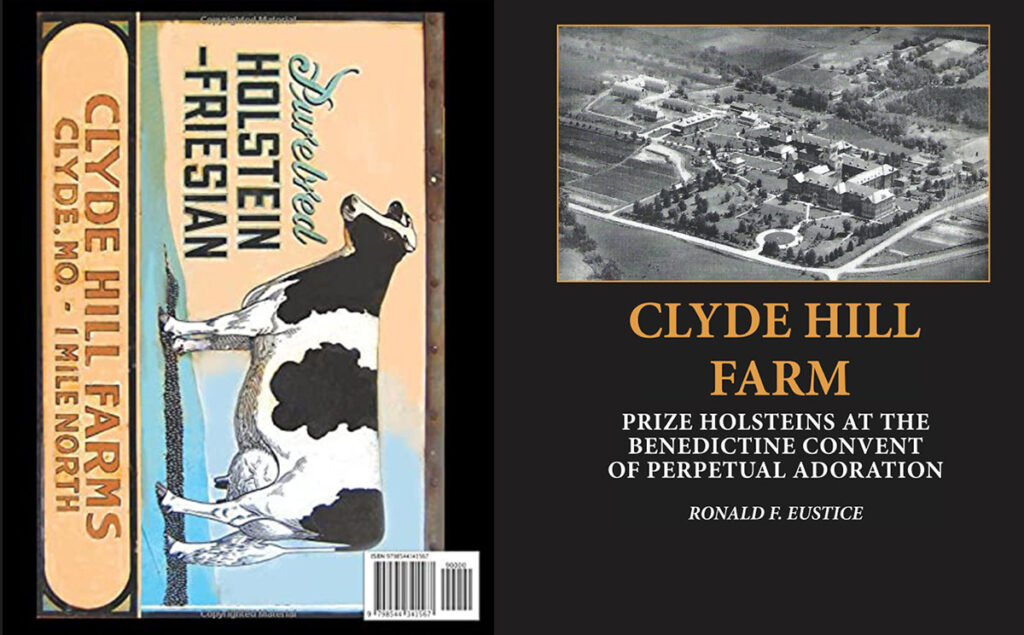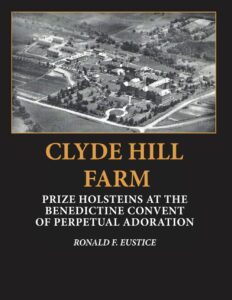
Clyde Hill Farm
Author: Ronald F. Eustice
The Benedictine Sisters of Perpetual Adoration are a contemporary monastic community of women that follow the Rule of St. Benedict. They are located at their monastery in Clyde, Missouri. The original monastery was founded in 1874 by a group of five sisters led by Sister Mary Anselma Felber, O.S.B., who came from the young monastery of Maria-Rickenbach (founded 1857) in Switzerland.
$45.00
 The Benedictine Sisters of Perpetual Adoration are a contemporary monastic community of women that follow the Rule of St. Benedict. They are located at their monastery in Clyde, Missouri. The original monastery was founded in 1874 by a group of five sisters led by Sister Mary Anselma Felber, O.S.B., who came from the young monastery of Maria-Rickenbach (founded 1857) in Switzerland.
The Benedictine Sisters of Perpetual Adoration are a contemporary monastic community of women that follow the Rule of St. Benedict. They are located at their monastery in Clyde, Missouri. The original monastery was founded in 1874 by a group of five sisters led by Sister Mary Anselma Felber, O.S.B., who came from the young monastery of Maria-Rickenbach (founded 1857) in Switzerland.
Arriving in Clyde, Missouri, they founded the Benedictine Convent of Perpetual Adoration. This remains the motherhouse and largest community of the congregation. It houses 550 documented relics of the saints. The decision to come to the United States was sparked by the departure of a group of monks from the nearby Engelberg Abbey, at a time when monastic communities felt threatened by political changes taking place throughout Europe. As with many other monastic groups, they looked to the “New World” for a place of refuge from wars and religious persecution. The monks went on to found Conception Abbey in nearby Conception, Missouri, and began to minister to German and Irish immigrants of the region.
Like the monastery in Switzerland, the sisters devoted much skill to the art of ecclesiastical embroidery, and assiduously cultivated the singing of plainchant. The sisters began teaching the German and Irish immigrant children and before long they opened St. Joseph’s Academy, and ran an orphanage. One of the first challenges was for the German-speaking sisters to learn English because local residents wanted their children taught in the English language.
From its earliest days, the religious community was poor and relied on charity and donations for support. In 1889, it was common for the sisters to be offered a cow in exchange for six months schooling at their academy. While farming was not the primary reason for the Convent to be established, it was necessary to feed a growing population of sisters, novices, postulantss, orphans and an ever-expanding group of needy people.
Gradually the sisters became self-sufficient in food through involvement in farming, gardening and livestock raising. Records show that in 1885, the sisters planted two-thousand cabbage plants and fifty tomato plants. The sisters gathered wild grapes to make wine as well as gooseberries. Outside labor was scarce so it was common for the sisters to cut hay, harvest corn, shuck oats, care for the poultry and milk the cows. They grew potatoes, churned butter, butchered hogs, rendered lard and made molasses as well as apple cider.
